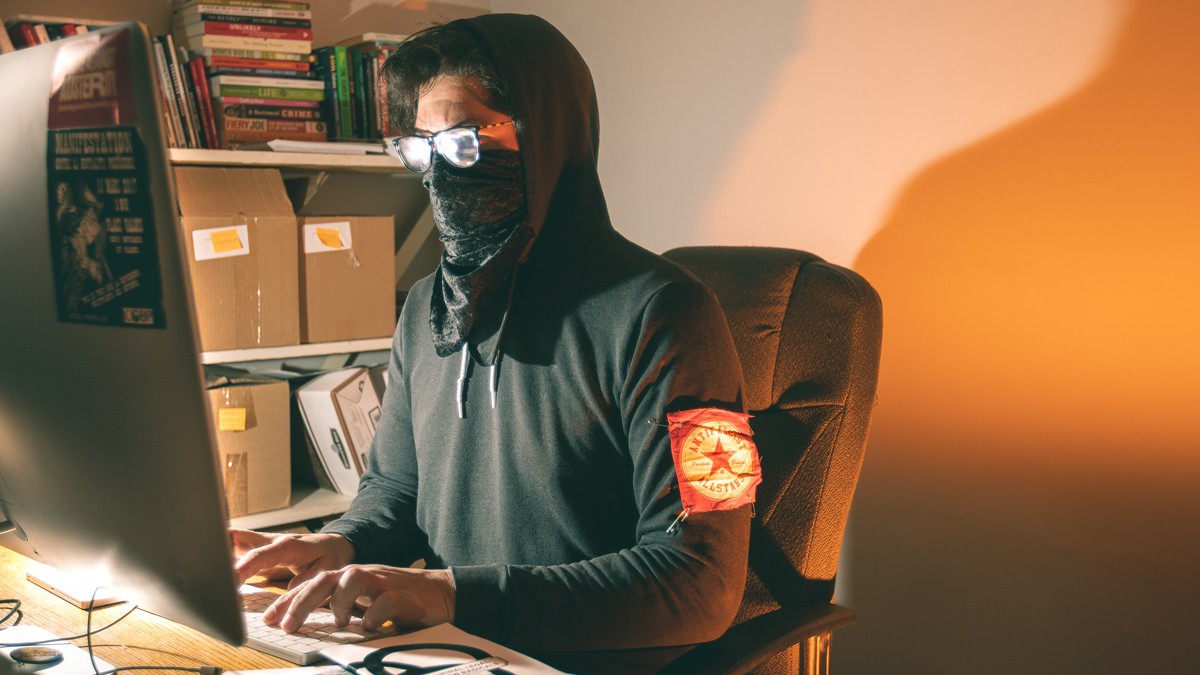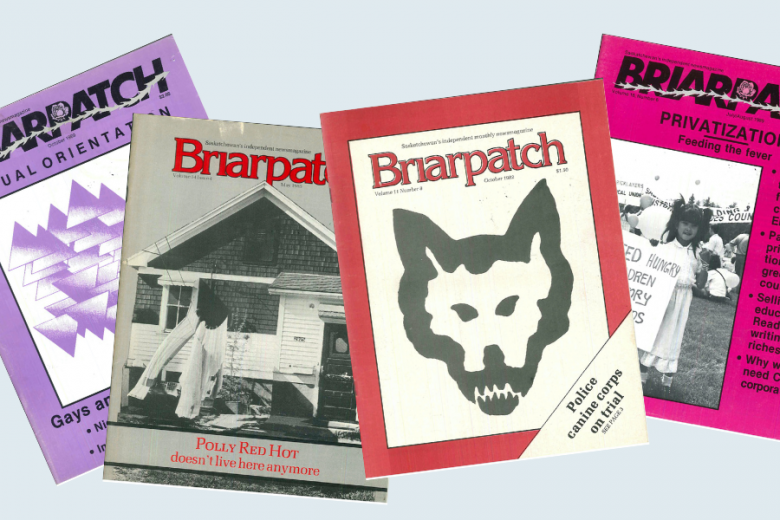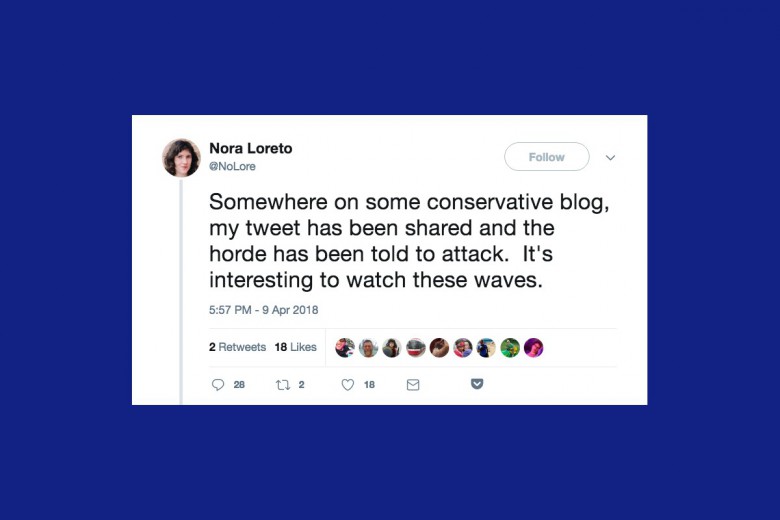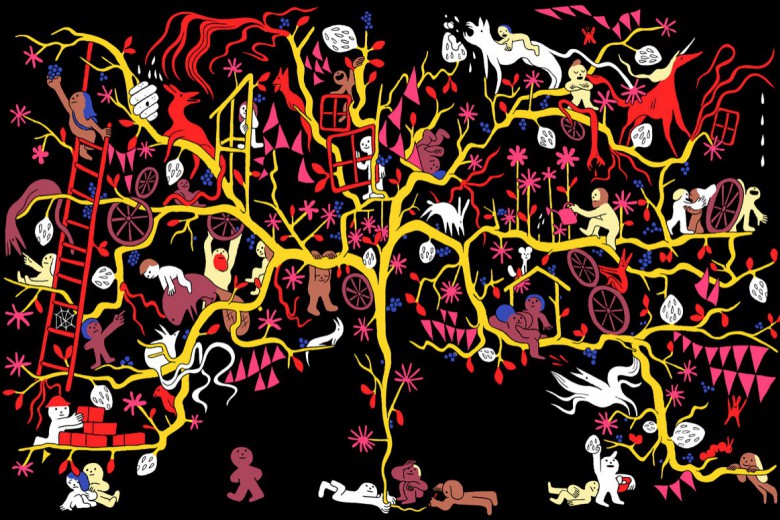In the months leading up to the Unite the Right 2 rally in Washington, D.C., my anti-fascist group spent untold hours preparing for the worst. Given that several of us had barely survived the neo-Nazi event’s first incarnation in Charlottesville, VA, the year prior, we expected to have to deal with violence from the rally attendees and from the police protecting them, and we planned accordingly by investing time in self-defence and offensive training, gathering medical supplies to assemble personal medic kits, getting protective clothing, planning our day-of communications strategies, researching the groups we expected to attend, and scouting the area of downtown D.C. in which we expected the fascists to march and then rally.
When, after all that, the most action we saw was less than two dozen fascists standing dejectedly in a park, then being coddled and gently led to safety by thousands of police, we were relieved – but glad that we’d been over-prepared. After having seen Heather Heyer draw her last breath, I never want to repeat that experience with another comrade. The Unite the Right 2 rally itself was a dismal failure, and should have been hailed as a massive win for anti-fascists, except the media spent all of its energy working to undermine our efforts and cast us in the most negative light possible. After a few photographers barged into the Black Bloc and tussled with several people therein, the media launched into its predictable “violent antifa” narrative, with no mention of the way our years of careful and strategic organizing have contributed to the downfall of the alt-right. Come on.
The Unite the Right 2 rally itself was a dismal failure, and should have been hailed as a massive win for anti-fascists, except the media spent all of its energy working to undermine our efforts and cast us in the most negative light possible.
It’s a familiar tune by now: the blaring headlines, panicked pundits, and screaming sound bites howling about “antifa terror” whenever a group of protesters in masks disrupts a far-right event. Whether it’s in Berkeley or in Boston, Toronto or Tucson, the spectre of antifa haunts the far-right extremists’ efforts to organize publicly. However, despite the demonstrable impact that anti-fascist activism has had upon the extreme right wing’s ability to gain power, the very concept of anti-fascism has been vilified in the press, and reduced to a seemingly endless stream of pearl-clutching editorials and riot porn. Fox News once warned of an “antifa apocalypse” and regularly reports on “antifa violence” in their website’s “crime” section. The Washington Post ran an op-ed titled, “Yes, antifa is the moral equivalent of neo-Nazis.” Another op-ed, this time in The Hill, opined, “Antifa is not a political movement; it’s a delusional, violent outburst.”
What those who oppose and dismiss antifa don’t know, though, is that there is far more to the movement than readily meets the eye. Those few hours on the streets are outweighed by the days and months invested in surveillance and information gathering (to say nothing of flyering, wheatpasting, tearing down fascist propaganda, monitoring local bars, fundraising, jail support, self-defence skillshares, child care…).
As activists emphasize, there are so many other tactics involved in this work – and before and after any kind of action at all takes place, so much research, and so many meetings.
“Research is like the anti-fascist version of watching TV,” Rev, an anti-fascist organizer based in the New York City area, tells me. “It’s something you do to pass the time if you’re bored at a bus station, or home with an hour to kill – you research what new Nazi groups are there, what are they about, do they have militias, have they violently attacked anyone, have any of them been doxxed recently. It gets oddly addictive, because you want your family and friends to be safe, so obviously you want to know the most you can about these idiots. Some people have research parties – maybe have some food, some wine, get some music, then you decide which groups and people you want to do research on.”
One of the most visible recent wins for anti-fascist research and organizing in the Montreal area came in May 2018, when the Montreal Gazette broke a story identifying a well-known neo-Nazi and writer for the white supremacist site the Daily Stormer. Known online only as “Zeiger,” the Gazette reported that he is an IT consultant whose real name is Gabriel Sohier Chaput. The story was co-authored by Christopher Curtis of the Gazette and journalists Jon Milton and Shannon Carranco, both of whom worked for or had recently worked for the Link, a student newspaper at Concordia University. As Milton explains, local anti-fascists managed to get their hands on an extensive collection of chat logs from Discord – one of the far-right’s favourite chat apps – that Montreal-based neo-Nazis had been using, for which Zeiger was an administrator.
“Research is like the anti-fascist version of watching TV.”
Montreal antifa hadn’t caught Zeiger yet, but they knew they were going to, and wanted to make his identity known, so they sent the material to Milton and Carranco in hopes of further publicizing their findings. Milton had existing relationships with people in the anti-fascist movement and had experience covering anti-fascist projects, so once he had access to the Discord logs, he and Carranco infiltrated the chat, downloading relevant information via a script, and independently verifying the identifying details they dug up. The end result was a bombshell story and, more importantly, a name.
Shortly after Chaput’s name was made public, his neighbourhood, Rosemont-La Petite-Patrie, was blanketed with flyers featuring his face, his home address, and the words “Ordure Nazi” – “Nazi filth” – as well as anti-Nazi graffiti. Similar posters went up within the following weeks identifying other local Nazis, including Shawn Beauvais-MacDonald, Vincent Bélanger-Mercure, as well as Philippe Gendron, who organizes with the Soldiers of Odin, a far-right anti-immigrant group. Since then, Milton says that no one really knows where Chaput is – he’s just gone dark.
“Anti-fascists take great personal risks and expend large amounts of energy to disrupt fascist organizing before it becomes a major threat,” Milton told me over email. “Sometimes, context-appropriate response means one-on-one empathetic conversation with a well-meaning friend who just said something racist. Other times, it means holding an eviction demo outside the home of a known local neo-Nazi, as residents of Montreal’s Hochelaga neighbourhood used to do in the early 1990s when the Klan had an active chapter there. A similar demonstration happened outside Chaput’s apartment shortly after he was revealed as a prominent neo-Nazi ideologue. What’s important, in any case, is to understand fascism, know how to identify it, and respond in whatever way is most effective whenever it manifests itself.”
Jaggi Singh of No Borders Media, an autonomous left-wing media network rooted in anti-racism and anti-fascism, has been involved in anti-racist struggles in the Montreal area for almost two decades, and also emphasizes the importance of surveillance and research in combatting the far right.
“The underpinning of anti-fascist organizing is solid research into fascist groups and individuals, and the creation of popular education materials, based on solid research, to inform the public about the threat of fascists,” he tells me. Street actions and doxxing (i.e. finding and publicly releasing an individual or group’s identifying personal information online) are only a small portion of the wide-ranging tactics that encompass anti-fascist work.
Shortly after Chaput’s name was made public, his neighbourhood, Rosemont-La Petite-Patrie, was blanketed with flyers featuring his face, his home address, and the words “Ordure Nazi” – “Nazi filth.”
For example, many antifa groups engage in guerilla communication tactics like calling neo-Nazis’ workplaces and schools to strike a blow to their livelihoods, and posting flyers with information and photos of local neo-Nazis around the neighbourhoods in which they live, in order to alert the community to the presence of fascists in their midst. Social media campaigns are another favourite technique to de-platform and isolate neo-Nazis, like the October 2018 doxxing campaigns targeting the Proud Boys and other violent extremist groups that helped lead to multiple arrests- in New York City.
“I think pretty much everything is overlooked except fighting and doxxing,” Spencer Sunshine, an activist who does counter-organizing against the far right, tells me. “There is a huge amount of other work that people can – and do – do! Some of these actions include removing fascist propaganda, making anti-racist flyers and stickers, doing educational work about white nationalist organizing, raising money and doing direct support for imprisoned anti-fascist activists, aiding the victims of far-right violence, holding memorial events for murder victims and genocides, and pressuring local businesses to refuse to allow fascists to use their space.”
The mainstream media’s hyper-focus on the images of Black Blocs and riots makes sense from an “if it bleeds, it leads” perspective, but only tells one side of the story.
“I think the media focuses on whatever is the most compelling, so of course they’re going to chase down any ‘criminal’ behaviour by a few over wanting to cover all the rest of the work anti-fascists do,” Kitty Stryker, a street medic with the Bay Area’s Struggalo Circus, tells me. “Most antifa I know are there because they fiercely love each other and their community, not because they’re itching for a fight.”
“I think this wears on anti-fascist activists, because we feel like not only are we dealing with the intensity of protests where we’re dealing with angry white supremacists, but we’re also dealing with liberals who at best dismiss us and at worst actively work against us.”
“Most antifa I know are there because they fiercely love each other and their community, not because they’re itching for a fight.”
The media’s tendency toward sensationalism also erases the work of people who aren’t physically at the action, but whose efforts have made it possible – or who will be there to care for those who were after the smoke clears. Anti-fascism encompasses people of a rich variety of identities, yet if you turned on the news, you’d see scant evidence of that fact, thanks to mainstream news outlets’ dogged determination to demonize antifa. Many people who aren’t able to hit the streets due to a variety of circumstances – from physical ability or immigration status to gender identity and familial obligations – are still heavily involved in the fight against white supremacy and fascism. It’s also those same people who have the most to lose under a fascist regime, and it’s their behind-the-scenes contributions – the so-called “grunt work” – that keep the entire movement running.
“Some of the most important anti-fascist work would never be identified as such by most observers,” Milton tells me. “This work is the daily, constant work of building up an anti-fascist culture. When you talk down your racist uncle at dinnertime, you’re creating anti-fascist culture. When you have the tough conversations with your colleagues that help them understand the humanity of migrants, you’re creating anti-fascist culture. The concrete manifestations of anti-fascism can look dramatically different from one person to the next. I research and write stories exposing far-right networks; others can organize protests, others can remove fascist propaganda from the streets, others can monitor online fascist communities, and so on.”
Even outside of your family dinner table, the possibilities to actively work to build this anti-fascist culture are endless, and can be tailored to a person’s specific interests and needs. As a street medic, Stryker advocates for basic medical skillsharing, so that more people are empowered to tackle smaller injuries and free up trained medics to focus on bigger problems at protests. Rev’s favourite tactic is using propaganda like flyers, banners, and memes to rally community support, and Singh works to build coalitions with larger anti-racist movements and directly affected communities. Sunshine’s focus is on writing, research, and community pressure. Emily Gorcenski, a data scientist and activist from Charlottesville, VA, who is now based in Germany, tells me that she uses her scientific background to help parse sometimes vast amounts of leaked information on neo-Nazi online organizing – she cites an instance when the activist media collective Unicorn Riot published hundreds of thousands of leaked Discord messages about the alt-right’s Unite the Right planning as an example of a particularly devastating resource to use against the neo-Nazis.
One of the most frustrating side effects of the mainstream media painting antifa as “thugs” is that it prevents people outside of the movement from understanding the realities and effectiveness of anti-fascism, and getting involved themselves. Dehumanizing news segments about black-clad “mobs” aren’t exactly the most compelling recruiting materials, even for those who would support antifa’s methods and message were they given a chance to learn about them without bias.
“We need to be promoting everyday anti-fascism, meaning broad sections of the population, not just committed activists, see themselves as part of anti-fascism,” Singh says.
Acts of everyday anti-fascism are happening all around us, far outside of the media bubble, and with deep roots in the very communities who are under threat from right-wing violence in its many forms. “A great example is how concerned parents and community members in Albemarle County, VA, are pushing to have hate symbols banned in public schools,” Gorcenski says. “They’re not doing this by expecting a revolution, but they are doing it by refusing to sit quietly while the powers that be kick the can down the road.”
Correction, December 28, 2018: This story originally stated that Milton and Carranco both worked for The Link when the Gazette story was published. In actuality, Carranco had recently stopped working for The Link, and Milton would stop working for The Link soon after the story broke.







